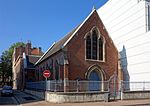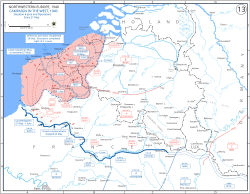Palais des Beaux-Arts de Lille

The Palais des Beaux-Arts de Lille (Lille Palace of Fine Arts) is a municipal museum dedicated to fine arts, modern art, and antiquities. It is one of the largest art museums in France. It was one of the first museums built in France, established under the instructions of Napoleon I at the beginning of the 19th century as part of the popularisation of art. Jean-Antoine Chaptal's decree of 1801 selected fifteen French cities (among which Lille) to receive the works seized from churches and from the European territories occupied by the armies of Revolutionary France. The painters Louis Joseph Watteau and François Watteau, known as the "Watteau of Lille", were heavily involved in the museum's beginnings - Louis Joseph Watteau made in 1795 the first inventory of the paintings confiscated during the Revolution, whilst his son François was deputy curator of the museum from 1808 to 1823. The museum opened in 1809 and was initially housed in a church confiscated from the Récollets before being transferred to the city's town hall. In 1866, the "musée Wicar", formed from the collection of Jean-Baptiste Wicar, was merged into the Palais des Beaux-Arts. Construction of the Palais's current Baroque-revival-style building began in 1885 under the direction of Géry Legrand, mayor of Lille, and it was completed in 1892. The architects chosen to design the new building were Edouard Bérard (1843–1912) and Fernand Etienne-Charles Delmas (1852–1933) from Paris. During the early 20th century, Victor Mollet served as its official architect. The building is located on the place de la République, in the center of the city, facing the préfecture of Lille. It was renovated during the 1990s and reopened in 1997. At the start of the 1990s, the building's poor state and the moving of Vauban's relief models of fortified towns to Lille forced the town to renovate the building. Work began in 1991, under the architects Jean-Marc Ibos and Myrto Vitart, and was completed in 1997. This allowed the creation of a new 700 m2 basement room for temporary exhibitions, as well as departments for the relief models and for 19th-century sculpture. Overall the museum covers 22000 m2 and held 72430 pieces as of 2015, one of the largest provincial collections of fine art. The collection includes works by Raphael, Donatello, Van Dyck, Tissot, Jordaens, Rembrandt, Goya, El Greco, David, Corot, Courbet, Toulouse-Lautrec, Delacroix, Rubens, Rodin, Claudel and Jean-Baptiste Chardin.
Excerpt from the Wikipedia article Palais des Beaux-Arts de Lille (License: CC BY-SA 3.0, Authors, Images).Palais des Beaux-Arts de Lille
Boulevard de la Liberté, Lille Euralille (Lille)
Geographical coordinates (GPS) Address External links Nearby Places Show on map
Geographical coordinates (GPS)
| Latitude | Longitude |
|---|---|
| N 50.630353 ° | E 3.062906 ° |
Address
Palais des Beaux-Arts (Musée des Beaux Arts)
Boulevard de la Liberté
59046 Lille, Euralille (Lille)
Hauts-de-France, France
Open on Google Maps










